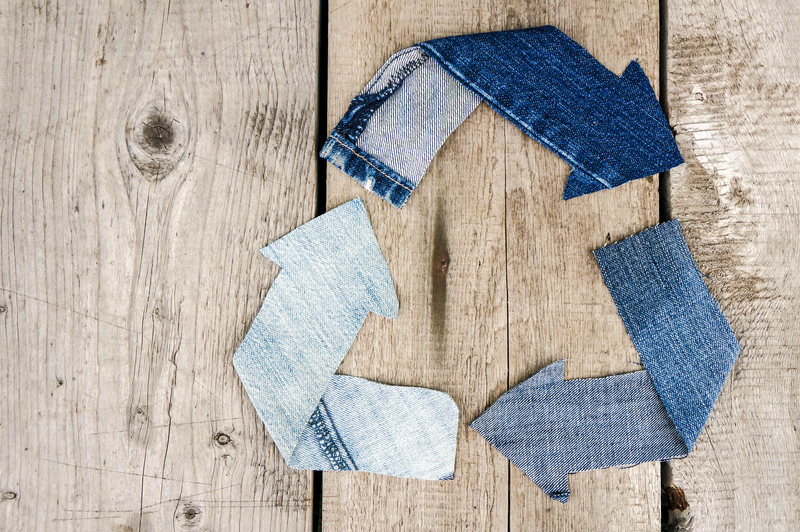Eco-Friendly Solutions for Disposing and Recycling Old Pots and Pans
Trying to declutter your kitchen? Looking for responsible ways to get rid of worn-out cookware? Instead of simply tossing them into the trash, discover how to give your old pots and pans a new life while protecting our environment. In this comprehensive guide, we'll explore eco-friendly solutions for disposing and recycling old cookware, with practical tips, best practices, and creative recycling ideas.
Why Is Proper Disposal of Pots and Pans Important?
With sustainability at the forefront of modern living, disposing of old cookware responsibly plays a crucial part in minimizing landfill waste and reducing environmental harm. Many pots and pans contain metals or coatings that do not break down in landfills, and improper disposal often means these materials pollute soil and water. By choosing eco-friendly options, you contribute to a healthier planet and encourage a culture of mindful consumption.
Environmental Impact of Traditional Disposal Methods
- Non-biodegradable metal can take hundreds of years to decompose.
- Toxic chemicals from Teflon or non-stick coatings may contaminate soil and waterways.
- Increased landfill volume burdens waste management systems.

Types of Pots and Pans Materials
Knowing what your old cookware is made of is essential for selecting the appropriate eco-friendly disposal method. Pots and pans are typically made from:
- Stainless steel
- Aluminum
- Copper
- Cast iron
- Non-stick (Teflon or ceramic coated)
- Enamel-coated
Recycling rules vary between these material types, so it's important to identify what you have before you head to a recycling center or plan a DIY upcycle project.
Eco-Friendly Methods to Dispose of Old Pots and Pans
Instead of simply putting your cookware in the trash, consider these eco-friendly solutions that help to recycle, reuse, or safely dispose of your pots and pans.
1. Recycling Metal Pots and Pans
Metal pots and pans--including those made of stainless steel, aluminum, and copper--can often be recycled. Here's how you can approach metal cookware recycling:
- Scrap yards: Many local scrap metal facilities accept cookware, provided it's free from non-metal attachments, such as plastic handles or glass lids.
- Municipal recycling centers: Check with your city's waste management department to see if they accept pots and pans in their curbside recycling, or if a special drop-off is required.
- Remove non-metal parts: Before recycling, make sure to strip off non-metal parts and dispose of them according to the appropriate waste stream.
Can Non-Stick Cookware Be Recycled?
Non-stick pans pose an extra challenge because of their chemical coatings. While some recycling centers accept these if coatings are removed, most require special processes. Check with Teflon or ceramic pan manufacturers (many have take-back or recycling programs) or search local hazardous waste collection events for proper disposal.
2. Donating Usable Cookware
If your old cookware is still in usable condition, donating it is one of the most sustainable ways to give it a second life. Many charities, community centers, and thrift stores accept cookware. This keeps functional items in circulation and helps those in need.
- Thrift shops and donation centers: Goodwill, Salvation Army, and similar organizations often accept lightly used pots and pans.
- Shelters and community kitchens: Homeless shelters, women's refuges, or food banks can make good use of your gently used cookware.
- Freecycle and online giving: Platforms like Freecycle, Facebook Marketplace, or local community groups are excellent for giving away usable items to your neighbors.
3. Upcycling and Repurposing Old Pots and Pans
For those feeling creative, upcycling is a fun and eco-friendly way to transform old cookware into useful or decorative household items. Some imaginative ideas include:
- Planters: Turn a saucepan or stockpot into a quirky garden planter. Drill drainage holes, fill with soil, and add your favorite flowers or herbs.
- Wall art: Use frying pans as the base for wall clocks or retro kitchen wall hangings.
- Organizers: Hang pots and lids to create unique wall-mounted storage or organizers for craft rooms and workshops.
- Bird feeders and baths: Convert shallow, wide pans into outdoor bird feeders or small birdbaths.
- Lighting fixtures: With some DIY know-how, old colanders and pasta pots can become striking pendant light shades.
4. Manufacturer Take-Back Programs
Some cookware brands offer take-back programs to recycle old pans and pots responsibly. Known for their sustainable initiatives, brands like TerraCycle collaborate with cookware manufacturers to accept and recycle used kitchenware, including non-stick cookware. Visit your brand's website or contact customer service to see if such a program exists for your old items.
How to Prepare Old Pots and Pans for Eco-Friendly Disposal
Preparing your old pots and pans before recycling or donation helps ensure they are accepted and processed correctly:
- Clean thoroughly: Remove any food residue and grease. Most facilities prefer clean, dry cookware for recycling or donation.
- Disassemble when possible: Take off plastic or wooden handles; separate lids, knobs, and other components.
- Sort by material: Sort your items into categories (e.g., aluminum, steel, copper) for easier processing at recycling facilities.
Special Steps for Non-Stick and Coated Pans
For pans with Teflon or ceramic coatings, contact your recycler ahead of time. If they only accept uncoated metals, you may need to strip the coating yourself or seek out a specialized collection point. Some city hazardous waste disposal programs also accept non-stick cookware.
What If Recycling Is Not Available?
Not all locales have effective recycling infrastructure for pots and pans. If that's your case, consider these alternative eco-friendly solutions:
- Give Away Locally: Online platforms, friends, or local bulletin boards are good for finding someone who can use even damaged pots and pans for alternative purposes.
- Craft and DIY Communities: Craft schools, artists, or repair workshops may appreciate old metals and pans for their projects.
- Use as Household Tools: Repurpose as scoops for gardening, storage bins, or small tools in your home or garage.
Frequently Asked Questions about Disposing of Old Pots and Pans
Are all types of cookware recyclable?
Most metal cookware is recyclable, but verify with your local recycler. Non-stick pans and those with plastic or silicone parts are less widely accepted and may require special handling or disposal.
What should I do with broken pots and pans?
Broken cookware might not be suitable for donation but can often still be recycled or upcycled. Be sure to remove any hazardous materials or coatings before recycling.
Can ceramic and glass cookware be recycled?
Most municipal recycling programs do not accept ceramic, glass, or Pyrex cookware due to the high melting points and different compositions compared to regular glass or ceramics. Look for specialized recycling programs or consider creative upcycling.
What about cast iron?
Cast iron pans are highly durable and can be restored, recycled as scrap iron, or upcycled. Their value as metal scrap often makes them accepted at most recycling or scrap facilities.
Tips to Prolong the Life of Your Cookware
The most sustainable solution is not to toss, but to prolong the life of your pots and pans through proper care:
- Hand wash instead of using the dishwasher if advised by the manufacturer.
- Avoid harsh scouring pads that degrade coatings or surfaces.
- Season cast iron regularly to prevent rust and build non-stick properties naturally.
- Use appropriate utensils to avoid scratching non-stick surfaces.
The Role of Consumers in Eco-Friendly Cookware Disposal
Each small decision towards better disposal and recycling habits has a ripple effect. By choosing sustainable methods to handle your old kitchenware, you:
- Reduce landfill waste and environmental pollution
- Conserve natural resources through metal recycling
- Support local communities by donating or repurposing
- Inspire others to make eco-conscious choices

Conclusion: Make Every Pan Count
Upgrading your kitchen doesn't have to come at the expense of the environment. With so many eco-friendly ways to dispose and recycle old pots and pans, there's no reason to send your cookware to the landfill. Whether you choose to recycle, donate, upcycle, or participate in manufacturer take-back programs, each act supports a greener future. Let your old pots and pans begin a new journey--one that sustains both your community and the planet.
Where to Find More Information
- Check your local recycling center's guidelines for cookware disposal specifics.
- Visit Earth911 to search recycling options by material and zip code.
- Contact cookware manufacturers regarding take-back and recycling programs.
- Explore online DIY and upcycling communities for creative ideas.
For more actionable tips on sustainable living and responsibly managing your home's waste streams, be sure to subscribe to our blog and follow our latest eco-friendly kitchen guides.